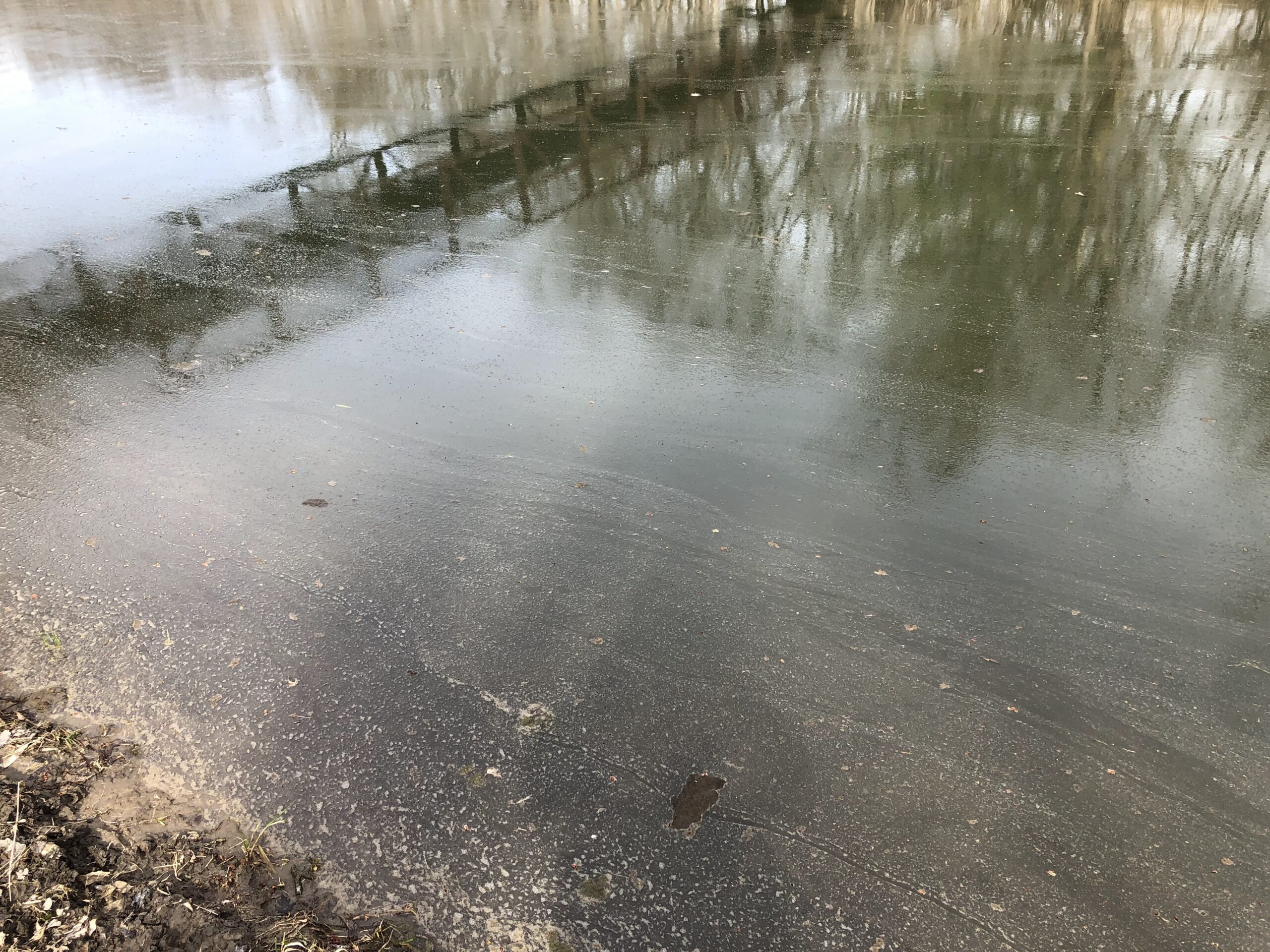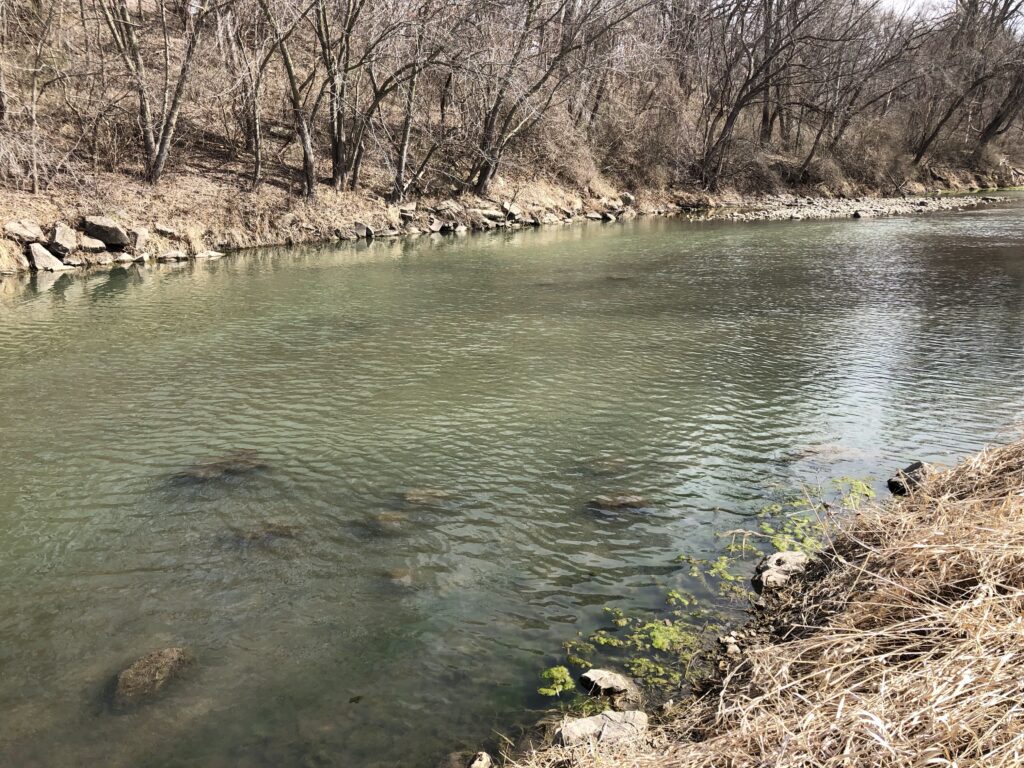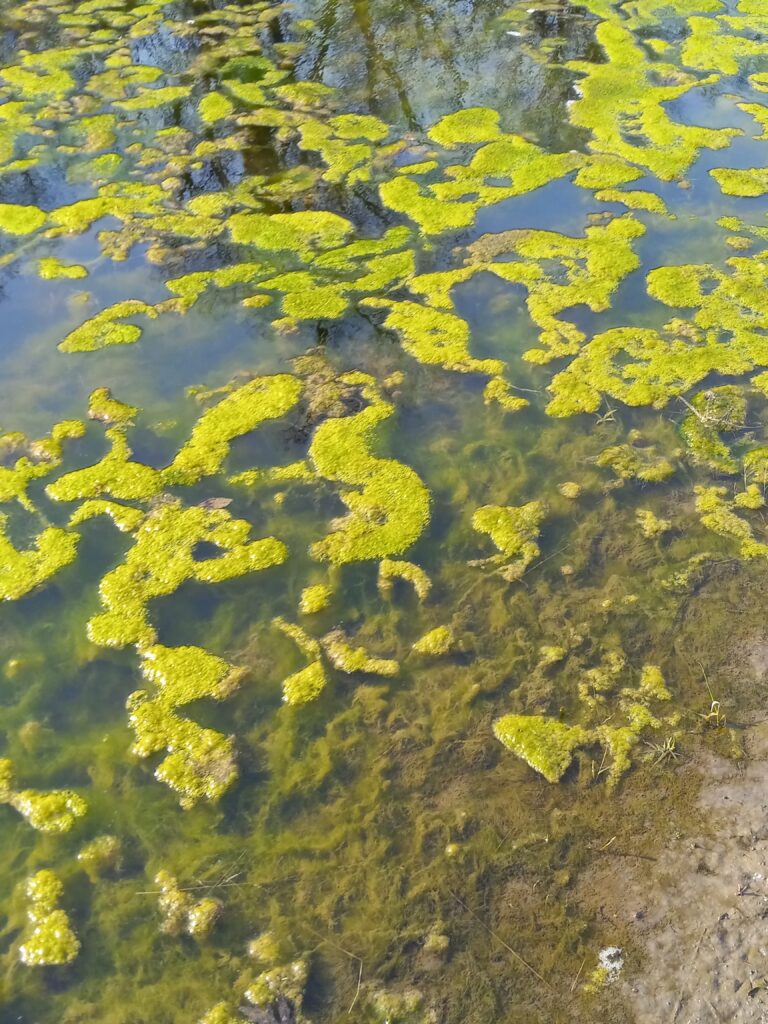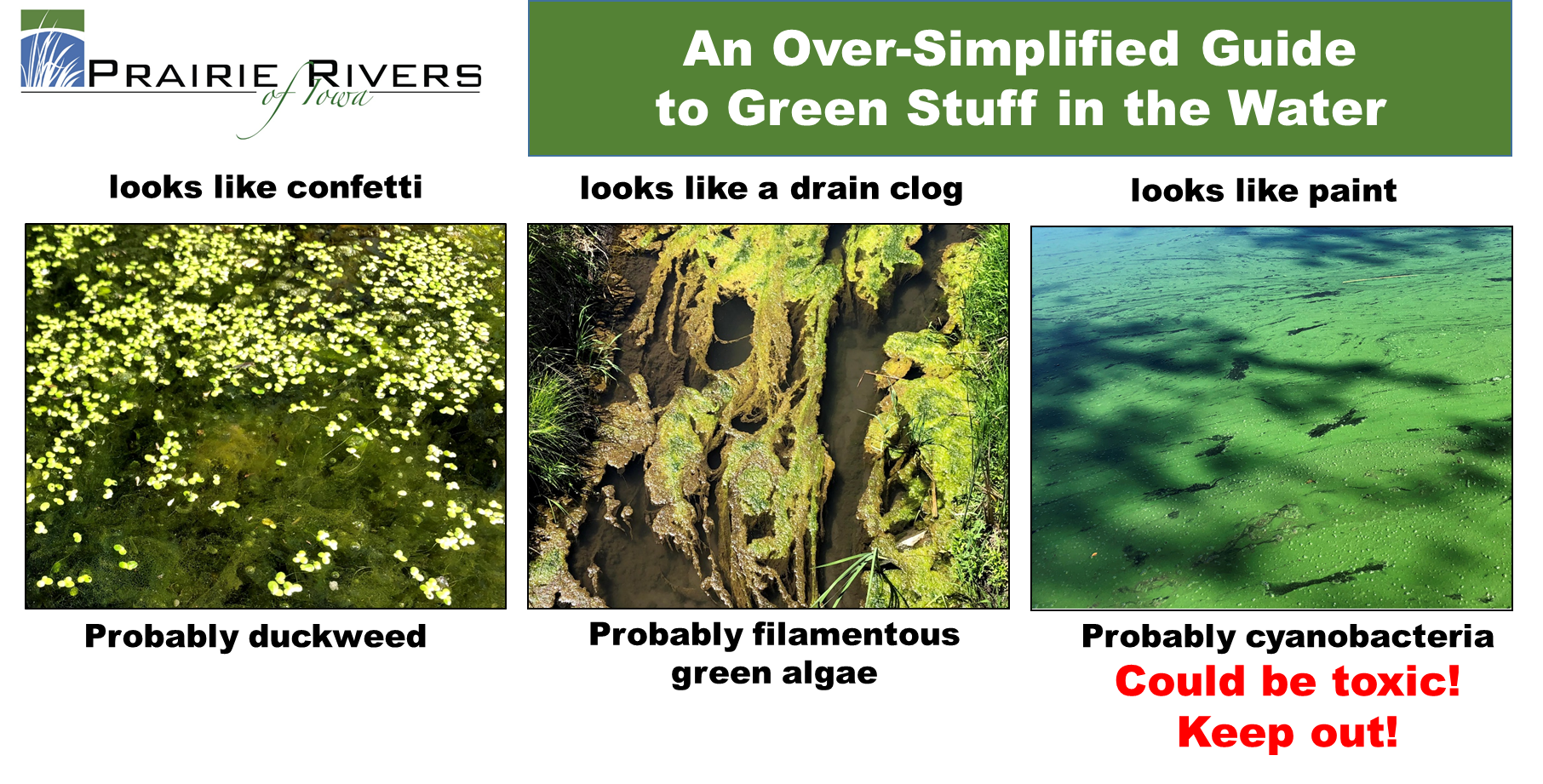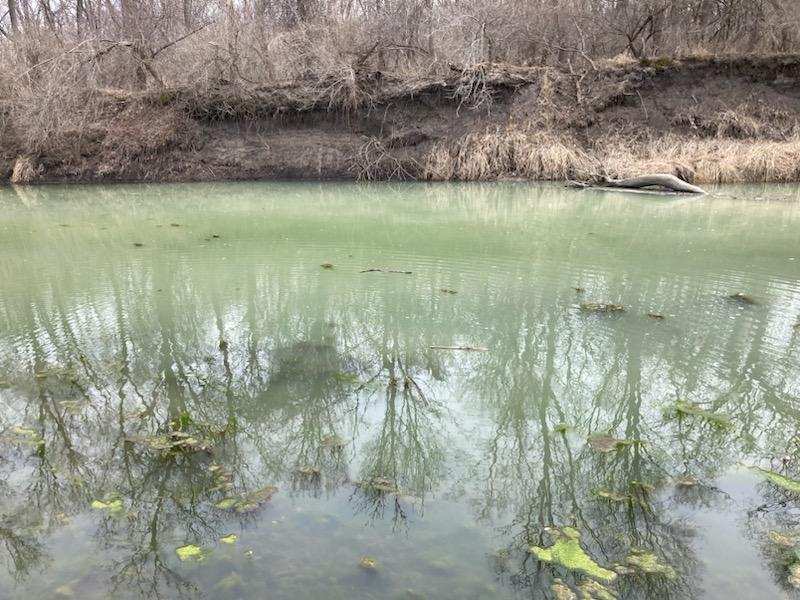
Green Stuff in the Skunk River
On Tuesday, March 12, residents on the north edge of Ames noticed that the South Skunk River was cloudy and had turned an unusual shade of bluish green. By the time I looked at it on the afternoon of March 13, the color had faded and the water was less cloudy, but it still had a soupy, streaked appearance that I’ve seen before in lakes following a toxic algae bloom. I’m gonna go out on a limb here and say it’s blue-green algae (cyanobacteria).
“Algae” is a word that gets lazily applied to any living thing that does photosynthesis but that isn’t a plant: from tiny glittering diatoms in a drop of pond water to giant kelp in the oceans. The other kind that I noticed in the South Skunk River this week is filamentous green algae, which forms slimy hair-like strands on rocks and globs on the water’s surface. Color is the least of the differences.
Cyanobacteria are tiny and simple. There’s strong evidence that the chloroplasts in the cells of plants and green algae are the captured descendants of cyanobacteria. This amazing phenonemon is called endosymbiosis, and it’s happened multiple times in the history of life on earth. If you’ve never heard of it, I’d recommend this YouTube video, which explains the concept with cartoons.
The practical reason to know if the green stuff in the water is cyanobacteria is because they can produce toxins. I wasn’t able to get a sample tested for microcystin (and chances are, this algae bloom will have dispersed by the time you read this), but I would recommend keeping your dog out of water that looks like paint or pea soup, to be on the safe side.
Why is the water so green, so early? Algae growth is limited by the availability of light, heat, and fertilizer–phosphorus in freshwater, and to a lesser extent nitrogen. We’re getting unseasonably warm weather before there’s any leaves on the trees to shade the water. As for the fertilizer, I’m not sure where it came from, or when. Rick Dietz and I tested nitrate and phosphate with field kits on Wednesday and measured 0 mg/L. Nitrate and phosphorus levels were also fairly low at this site when we collect grab samples in February. Maybe something was washed into the river earlier in the week, but it has since been used up by the algae or has washed downstream. I’ll amend this article if I find out something conclusive.

